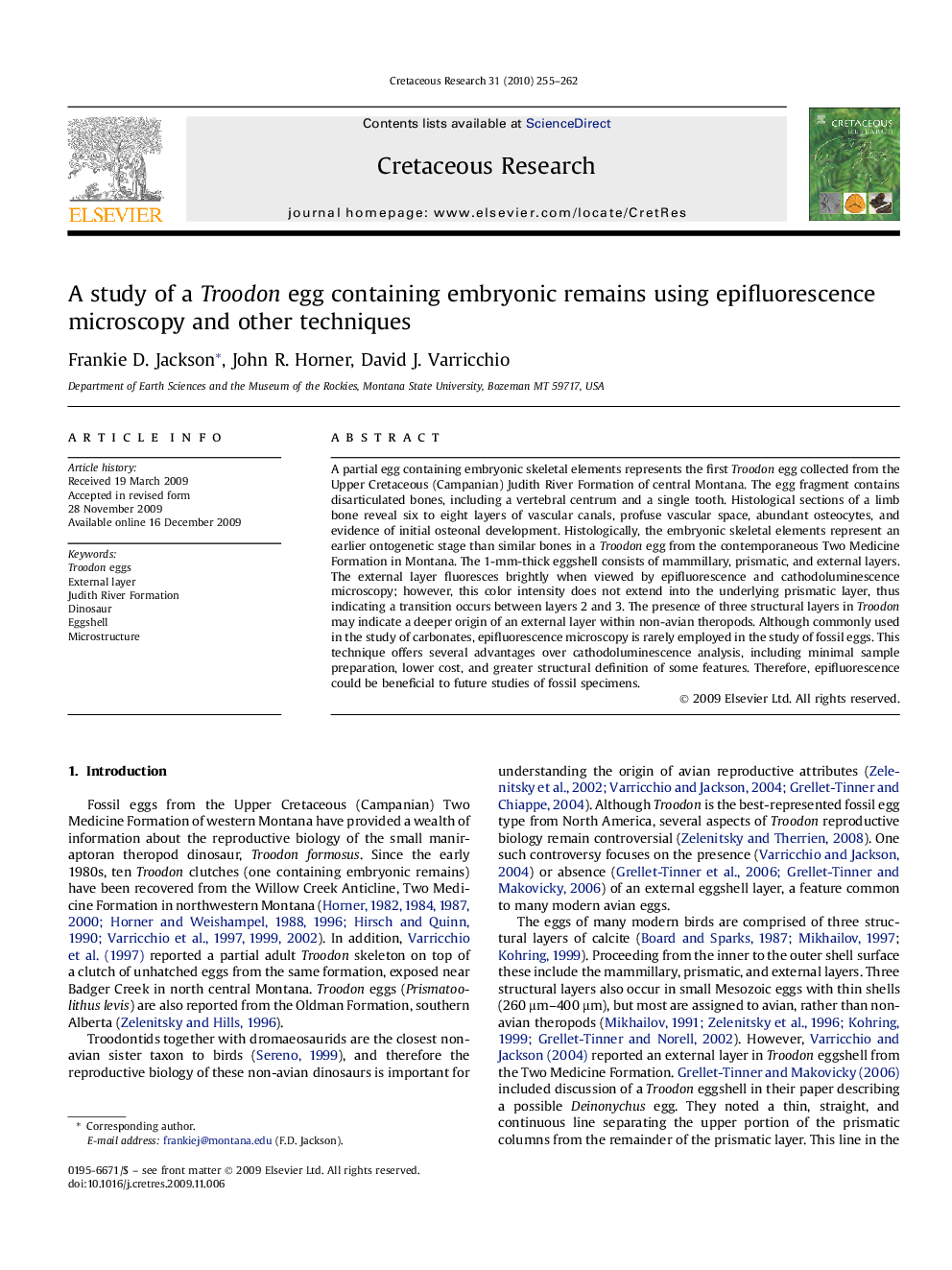| کد مقاله | کد نشریه | سال انتشار | مقاله انگلیسی | نسخه تمام متن |
|---|---|---|---|---|
| 4747511 | 1359918 | 2010 | 8 صفحه PDF | دانلود رایگان |

A partial egg containing embryonic skeletal elements represents the first Troodon egg collected from the Upper Cretaceous (Campanian) Judith River Formation of central Montana. The egg fragment contains disarticulated bones, including a vertebral centrum and a single tooth. Histological sections of a limb bone reveal six to eight layers of vascular canals, profuse vascular space, abundant osteocytes, and evidence of initial osteonal development. Histologically, the embryonic skeletal elements represent an earlier ontogenetic stage than similar bones in a Troodon egg from the contemporaneous Two Medicine Formation in Montana. The 1-mm-thick eggshell consists of mammillary, prismatic, and external layers. The external layer fluoresces brightly when viewed by epifluorescence and cathodoluminescence microscopy; however, this color intensity does not extend into the underlying prismatic layer, thus indicating a transition occurs between layers 2 and 3. The presence of three structural layers in Troodon may indicate a deeper origin of an external layer within non-avian theropods. Although commonly used in the study of carbonates, epifluorescence microscopy is rarely employed in the study of fossil eggs. This technique offers several advantages over cathodoluminescence analysis, including minimal sample preparation, lower cost, and greater structural definition of some features. Therefore, epifluorescence could be beneficial to future studies of fossil specimens.
Journal: Cretaceous Research - Volume 31, Issue 2, April 2010, Pages 255–262